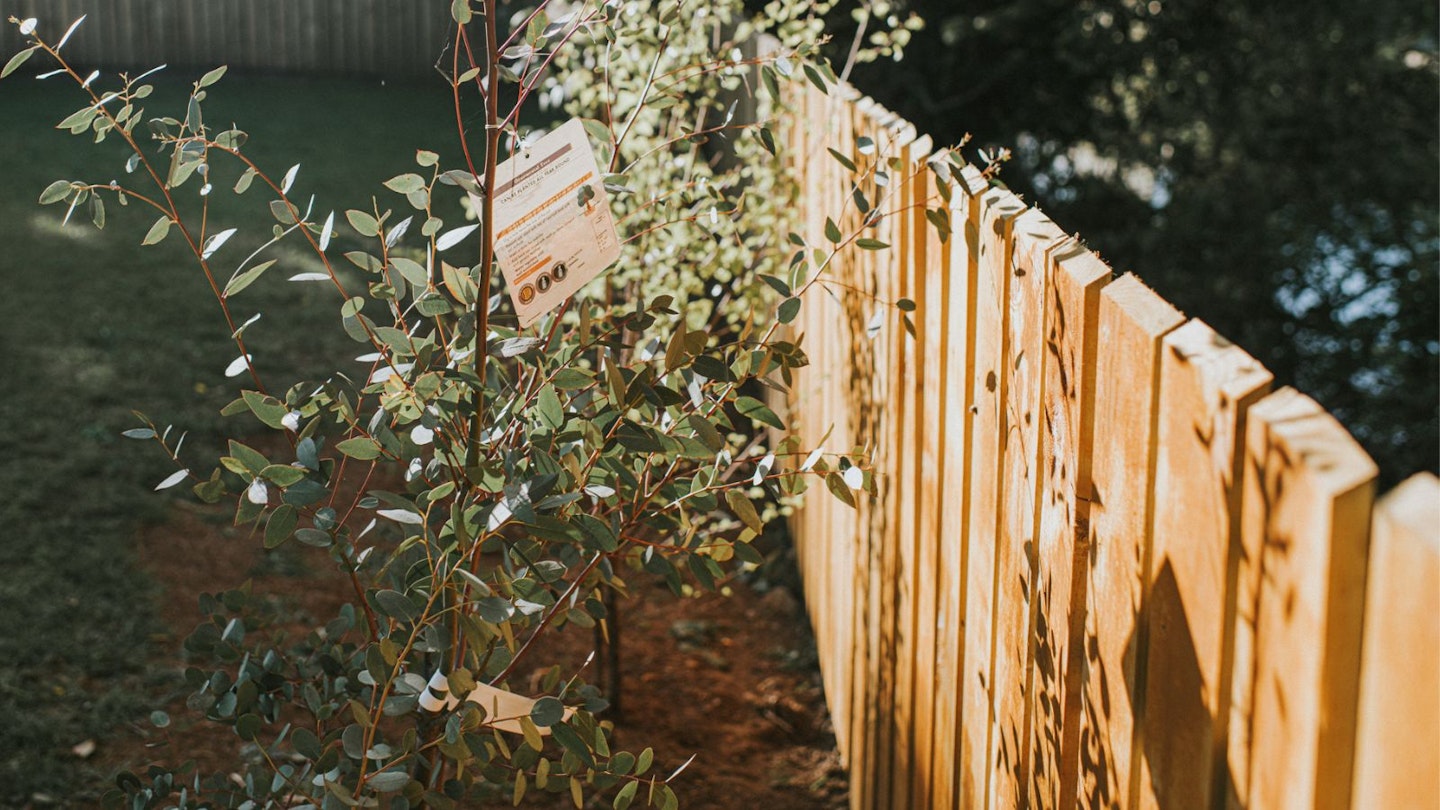The best tree for a small garden is a big decision to make. If you only have limited ‘growing’ room to play with, you may think that a tree in your outdoor planting plan is out of the question. Fortunately, there are plenty of small trees available that you can introduce to your outside space whether you want to enhance a beautiful focal point like a water feature, add a little more privacy or shade that a tree can provide, or help your garden to be a more vibrant landscape.
According to Nick Bailey, a gardening designer and TV presenter with over 30 years of horticultural experience, “The challenge with introducing trees to our gardens is finding the species or cultivar that is big enough to count as a tree but small enough to fit in our gardens. There are a few trees that fit the bill, reaching little more than 3-4 metres with spread a of 2-3 metres.”
Best trees for small gardens at a glance:
• Best for a pop of colour: Japanese Maple 'Osakazuki' (Acer Palmatum) - View on Thompson & Morgan
• Best for hardiness: Frosted Thorn (Crataegus Prunifolia Splendens) - View on Ornamental Trees
• Best for year-round greenery: Little Gem (Magnolia Grandiflora) - View on Gardening Express
Below we’ve shared some great trees for small gardens including some of Nick’s recommendations for Garden News that'll complement without dwarfing your outdoor space.
Best trees to grace small gardens
Best for a pop of colour

www.thompson-morgan.com
Trees can be a great way to add a colour pop. With vibrant foliage that changes throughout the year from purple to an intense red autumn display, try a graceful Japanese maple. The Osakazuki is a great choice for the smaller garden as they are slow-growing and tolerate shade well. They are also an attractive shape and work well in a large tub too.
Tree care: Water regularly throughout the growing season and lightly trim stems if necessary in autumn and winter. Plant in moist, fertile, well-drained soil in sun or dappled shade.
Review: "Small but very beautiful tree. Revived well to show gorgeous leaves."
Pros
- Intense autumn colours
- Hardy
Cons
- Slow-growing
| Tree size: | Max height 4m, spread 4m |
Best for hardiness
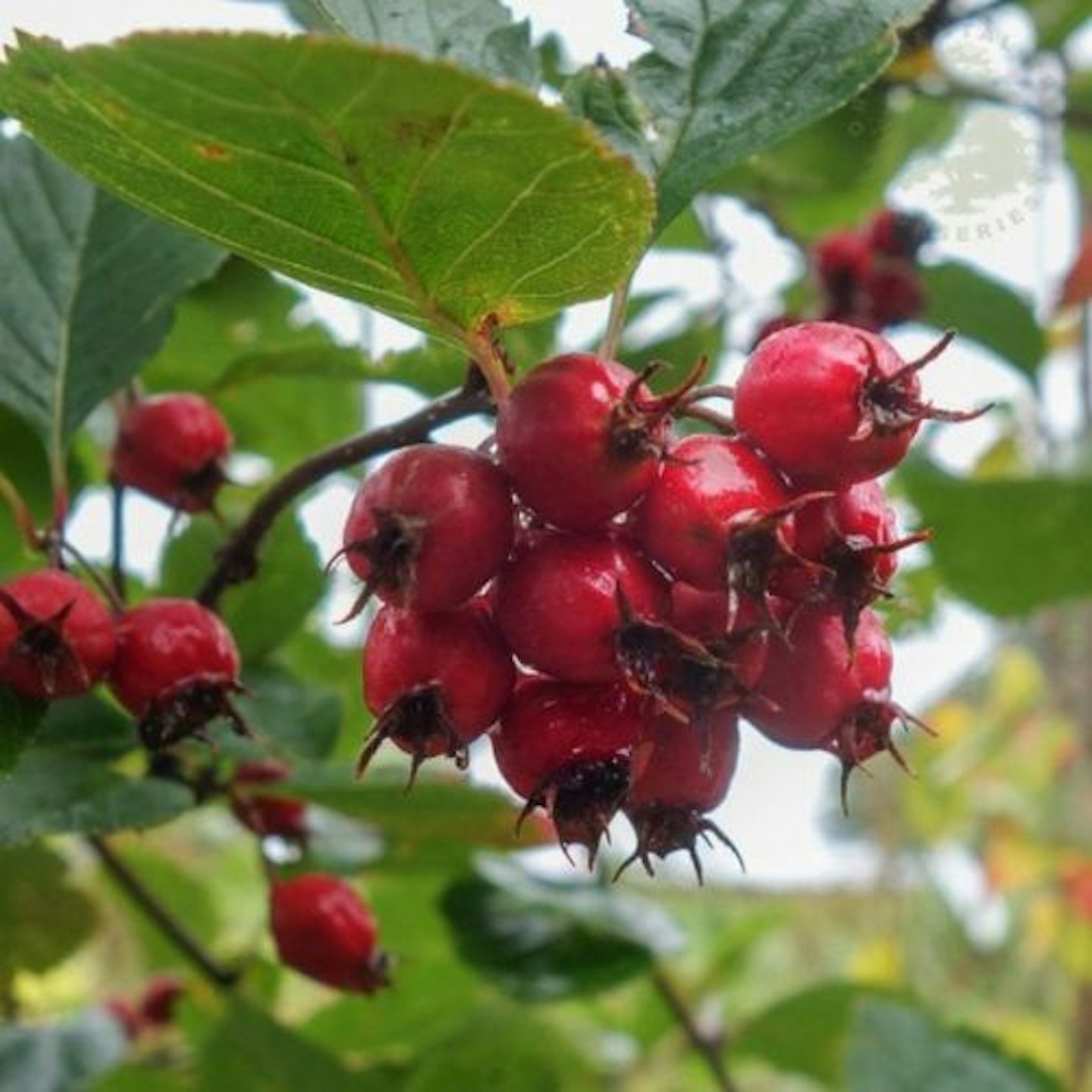
www.ornamental-trees.co.uk
Nick says, “This is one of my top five favourite small trees. It reaches little more than five metres and naturally produces a lollipop form. Flowers appear in spring followed by large fruit which ripens red, ready to accompany the striking orange and red autumn foliage. A true all-rounder.” A part of the hawthorn family, this is one of the best trees for small gardens as it will also encourage more wildlife in your garden.
Tree care: If you’re planting in spring or summer, water well for the first few months. Once planted, keep the area free of competing weeds and grass for the first couple of growing seasons.
Pros
- Blossoms in spring
- Fruits in autumn
Cons
- Requires staking
| Tree size: | Max height 5m, spread 4m |
Best for year-round greenery
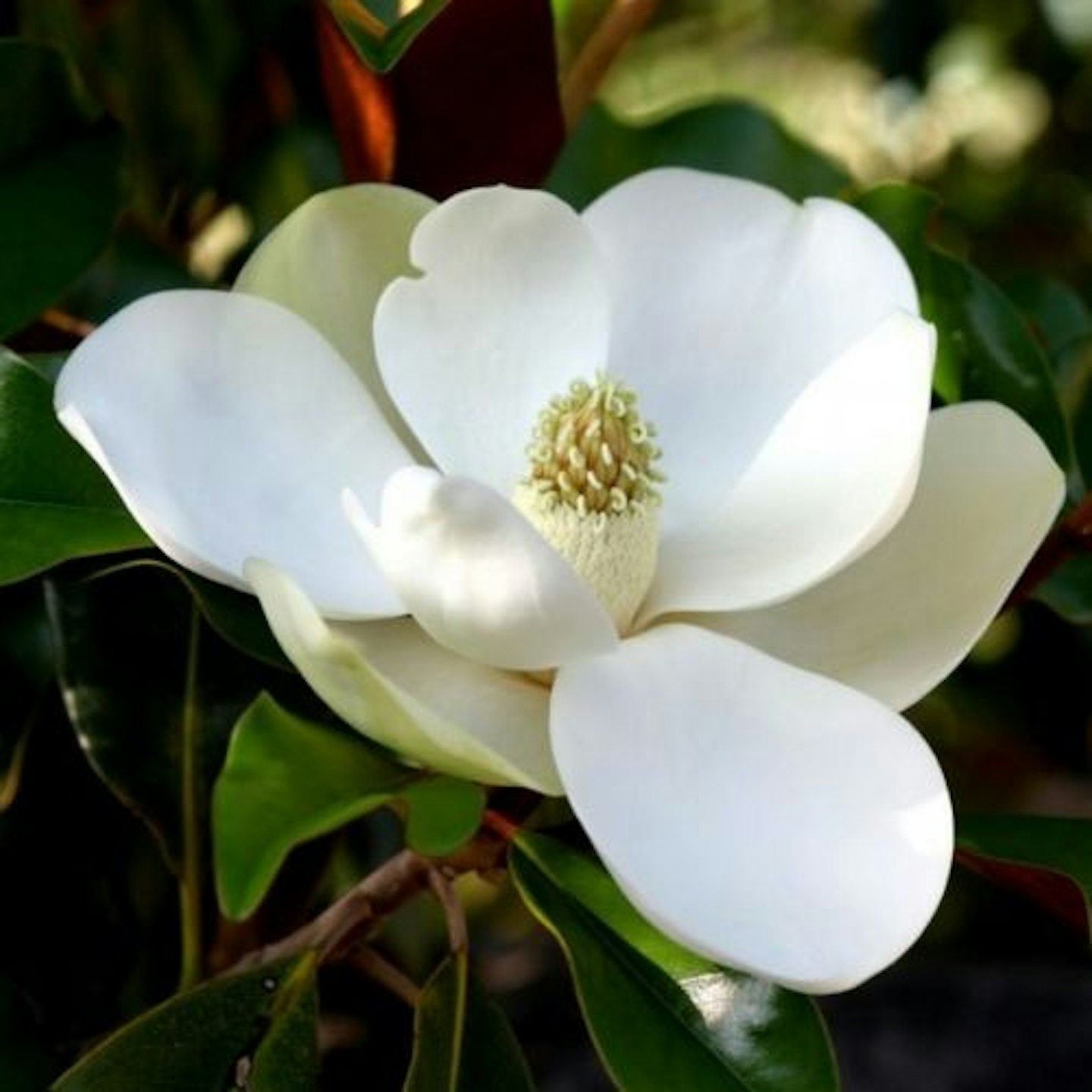
www.gardeningexpress.co.uk
Plant an evergreen Magnolia Grandiflora to add a dark note of drama whatever the season. Its glossy green leaves make it the ideal year-round performer, but it won’t spread out of control and isn’t large enough to have any impact on neighbouring gardens. In late summer and early autumn, it has huge cream flowers with a delicious lemony perfume.
Tree care: Position in full sun or partial shade in well-drained, fertile soil. Somewhat hardy, it is best to shelter from cold winds.
Pros
- Compact growth
- Flowers have a lemony fragrance
Cons
- Doesn't like cold winds
| Tree size: | Max height 4-5m, spread 2.5-3m |
Best for screening
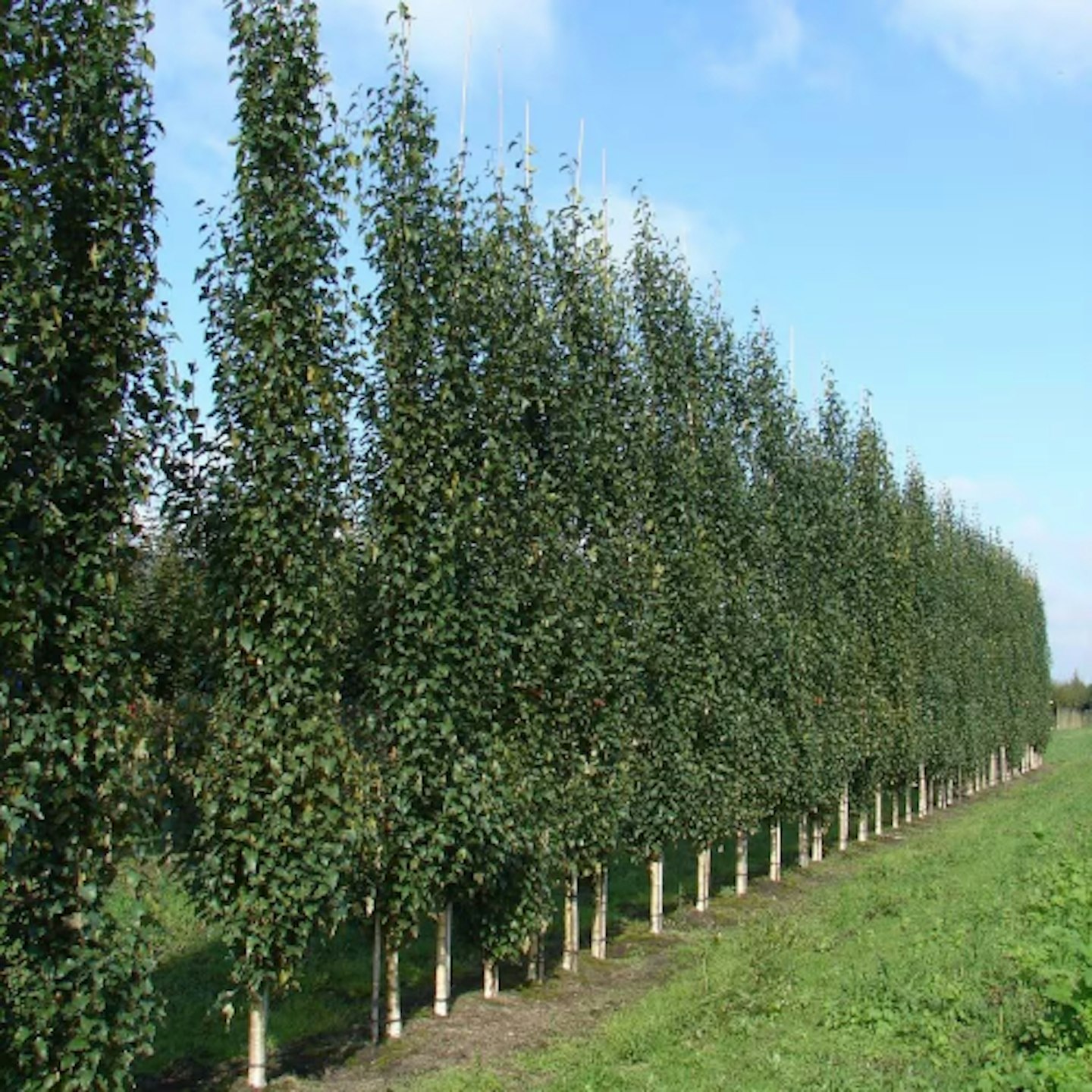 Amazon
Amazonwww.crocus.co.uk
Nick says, “I first encountered this tree on a TV shoot. It’s the perfect small garden tree reaching little more than four metres with a one-meter spread. It has a true columnar form but otherwise has every trait of a standard Betula pendula.” The elegant silver birch is always a good choice of tree to provide quick cover in small gardens and is available to order from late summer.
Tree care: Position in full sun or lightly dappled shade in moderately fertile, well-drained soil. Requires minimal pruning.
Pros
- Slimline columnar growth
- Minimal pruning
Cons
- Need to order when in season
| Tree size: | Max height 5m, spread 2m |
Best for wall growth

www.crocus.co.uk
If you're considering the best tree for your small garden, don't overlook a fig tree. Highly ornamental with large glossy leaves, this tree will grow an abundance of rich and sweet figs in late summer/ early autumn. Best grown against a south or south-west facing wall, it's an easy tree to grow and if you want to focus on harvesting fruit rather than top growth, plant it into a large pot buried in the ground.
Tree care: Position in full sun. It will tolerate most soils, except very badly drained. Remove any frost-damaged or weak branches, and thin out shoots to let light in.
Customer review: "This arrived promptly and I planted it immediately following the instructions provided, it has flourished and gone from a small well-formed plant to a vigorously growing young tree. It has already produced its first fig and this coming season I hope to see more."
Pros
- Produces fruit
- Will tolerate most soils
Cons
- Needs thinning out
| Tree size: | Max height 5m, spread 2m |
Best ornamental tree
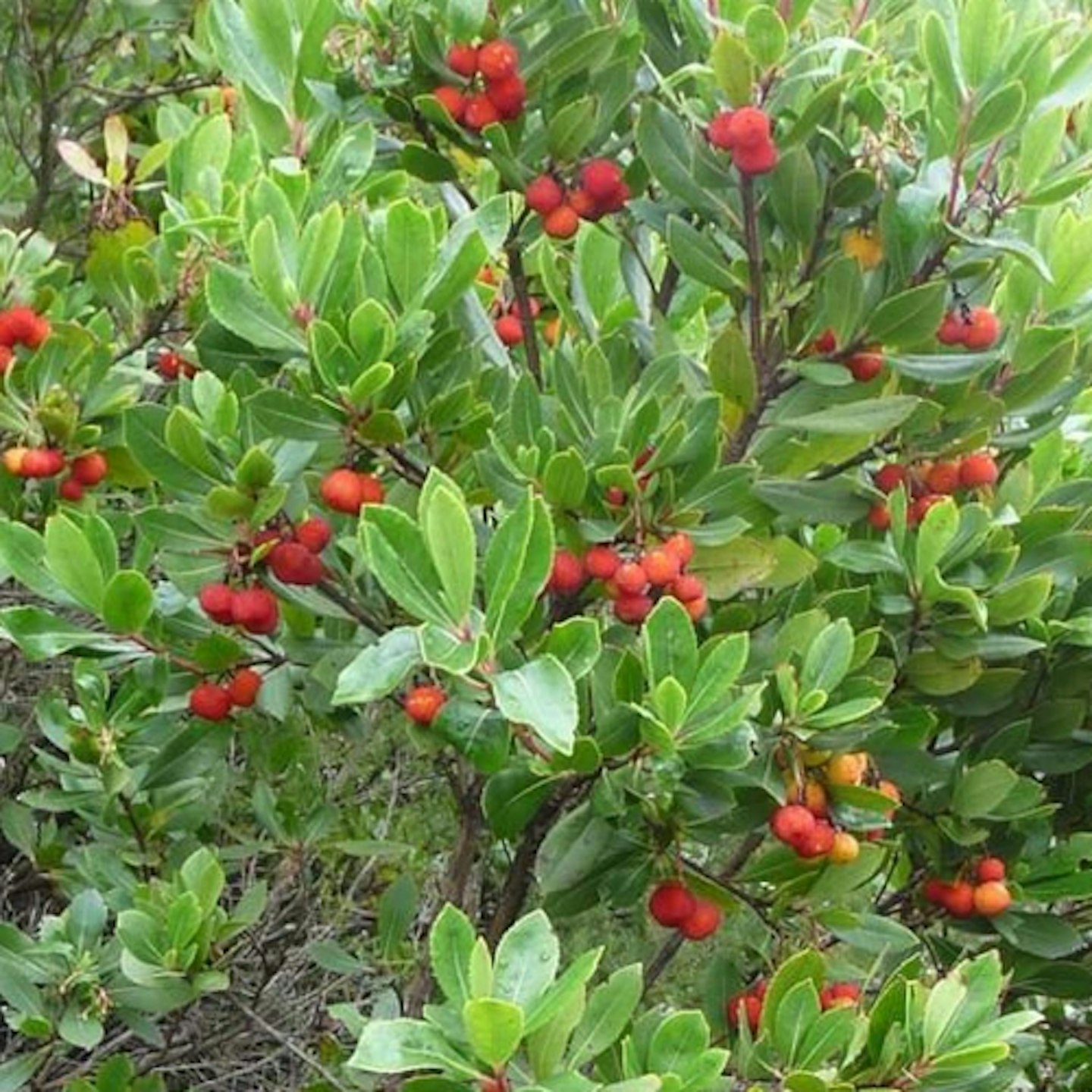 Amazon
AmazonThis strawberry tree has the added bonus of ruddy-brown papery bark, not the mention the white urn flowers and strawberry-like fruits that appear in autumn. However, it's worth noting that the fruits are purely ornamental and are not to be eaten. It’s also evergreen meaning it looks perpetually good!
Tree care: Position in full sun. Plant in fertile, well-drained soil but it can tolerate alkaline soils. Requires minimal pruning.
Customer review: "Tree arrived in perfect condition and taller than expected. Planted it straight away and it appears to be thriving."
Pros
- Evergreen
- Happy in alkaline soil
Cons
- Fruits not edible
| Tree size: | Max height 6m, spread 5m |
Best for foliage
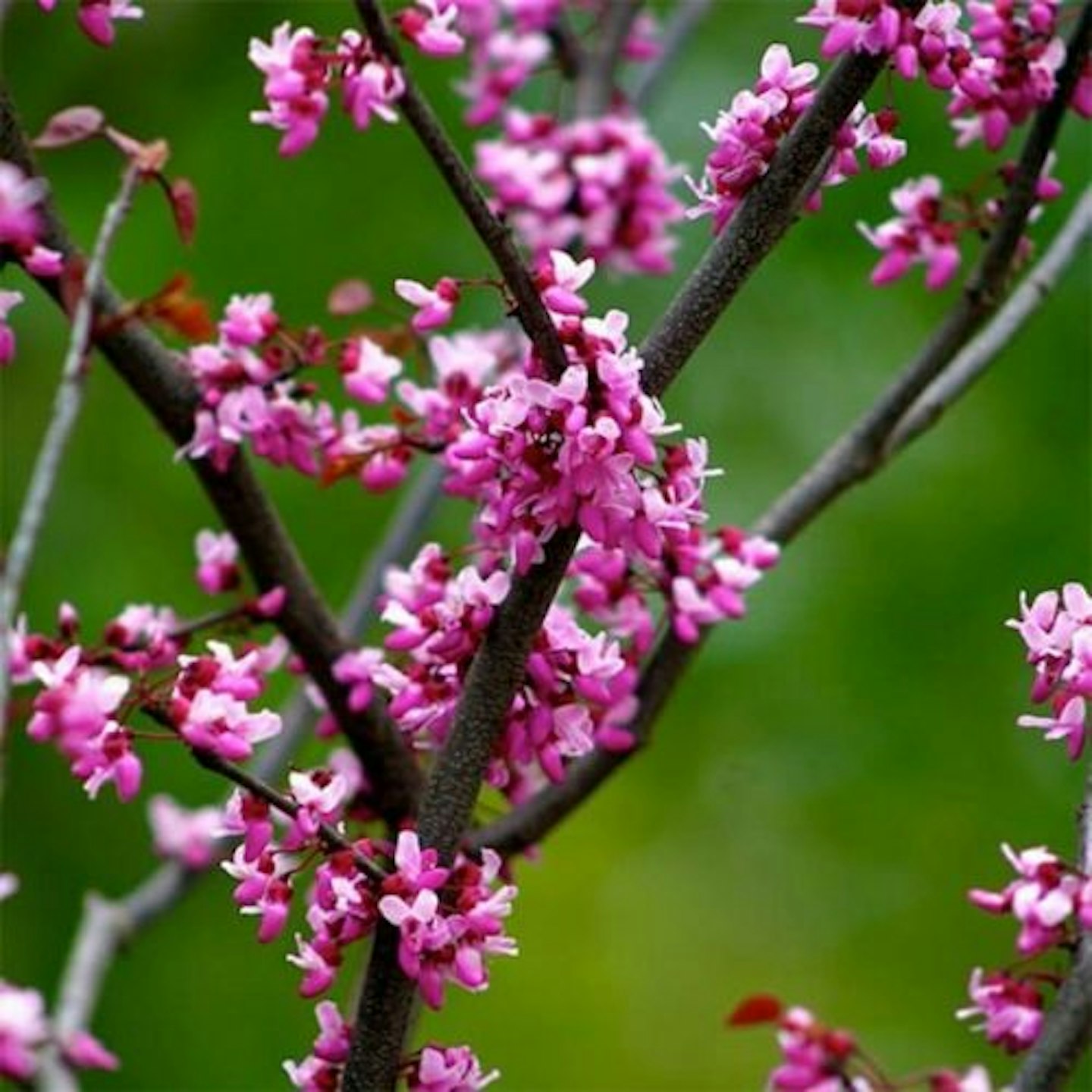
www.gardeningexpress.co.uk
“Some would cite this plant as a large shrub but either way it’s perfect tree for small gardens with its ball-like form of three by two metres." Says Nick. "Foliage is large and lush with beautiful burgundy and purple tones which become a rich red in fall.” Winning the RHS Award of Garden Merit, it's easy to grow and maintain.
Tree care: Position in full sun or partial shade. Grow in fertile, moisture-retentive well-drained soil.
Customer review: "Easy ordering and although a longish wait for delivery my tree is now here. It has travelled well and is a good size and shape. Definitely worth the wait."
Pros
- RHS Award of Garden Merit
- Beautiful autumn colours
Cons
- Can be slow to flower
| Tree size: | Max height 4-8m, spread 4-8m |
Editor's Choice
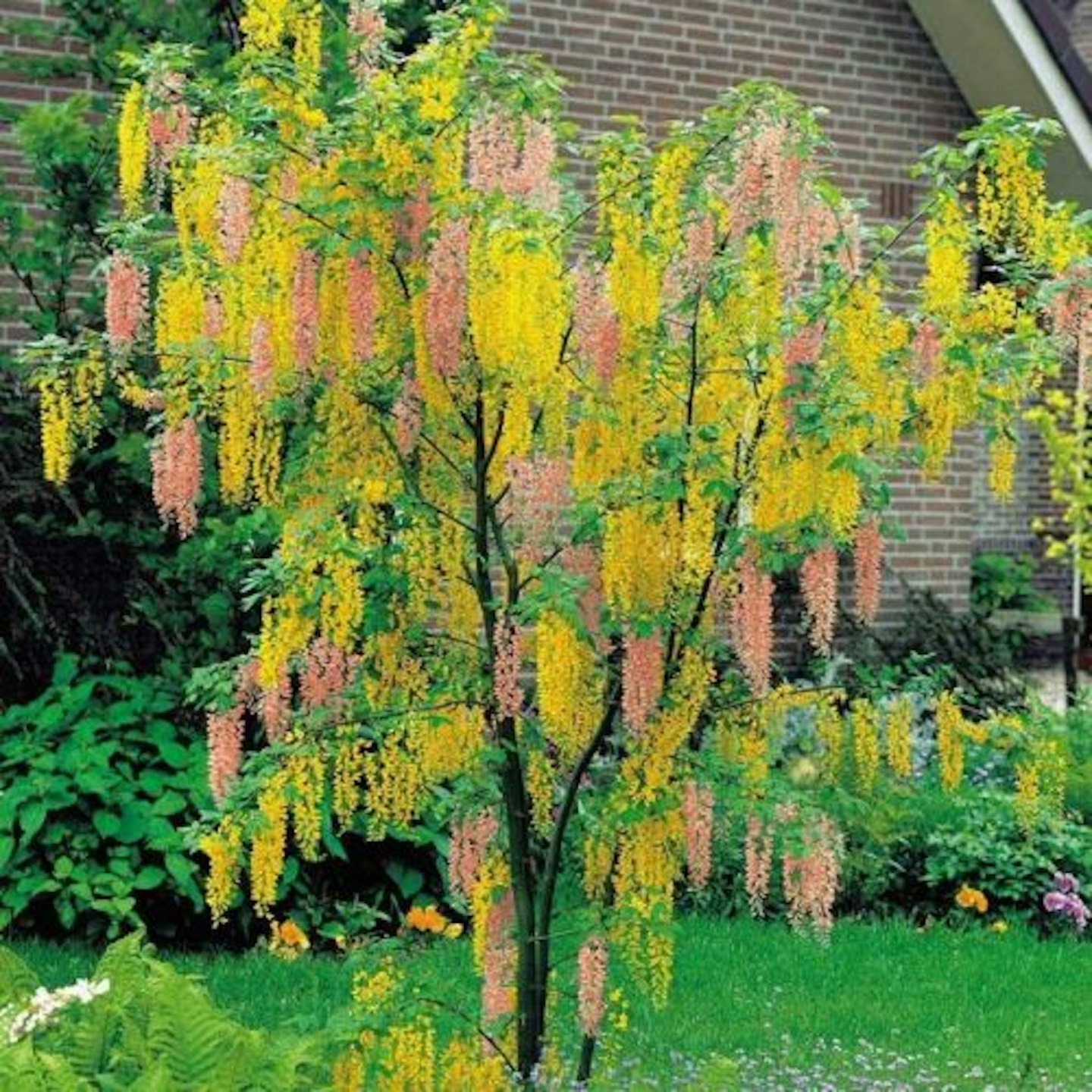
www.gardeningexpress.co.uk
If we had to highlight one of the best trees for a small garden, this laburnum comes in as "Editor's Choice." This slow-growing tree is ideal for smaller gardens and a beautiful choice for those wanting more flowers in their outdoor space. Adam's Laburnum produces elegant blooms of canary yellow and mauve-pink in the late spring and early summer, similar to a brightly coloured clematis. Even better, it's low maintenance and easy to grow.
Tree care: Position in full sun. Grow in moderately fertile, moist but well-drained soil.
Pros
- Abundant flowers
- Low maintenance
Cons
- Poisonous if eaten
| Tree size: | Max height 4-8m, spread 2.5-4m |
Best for attracting wildlife
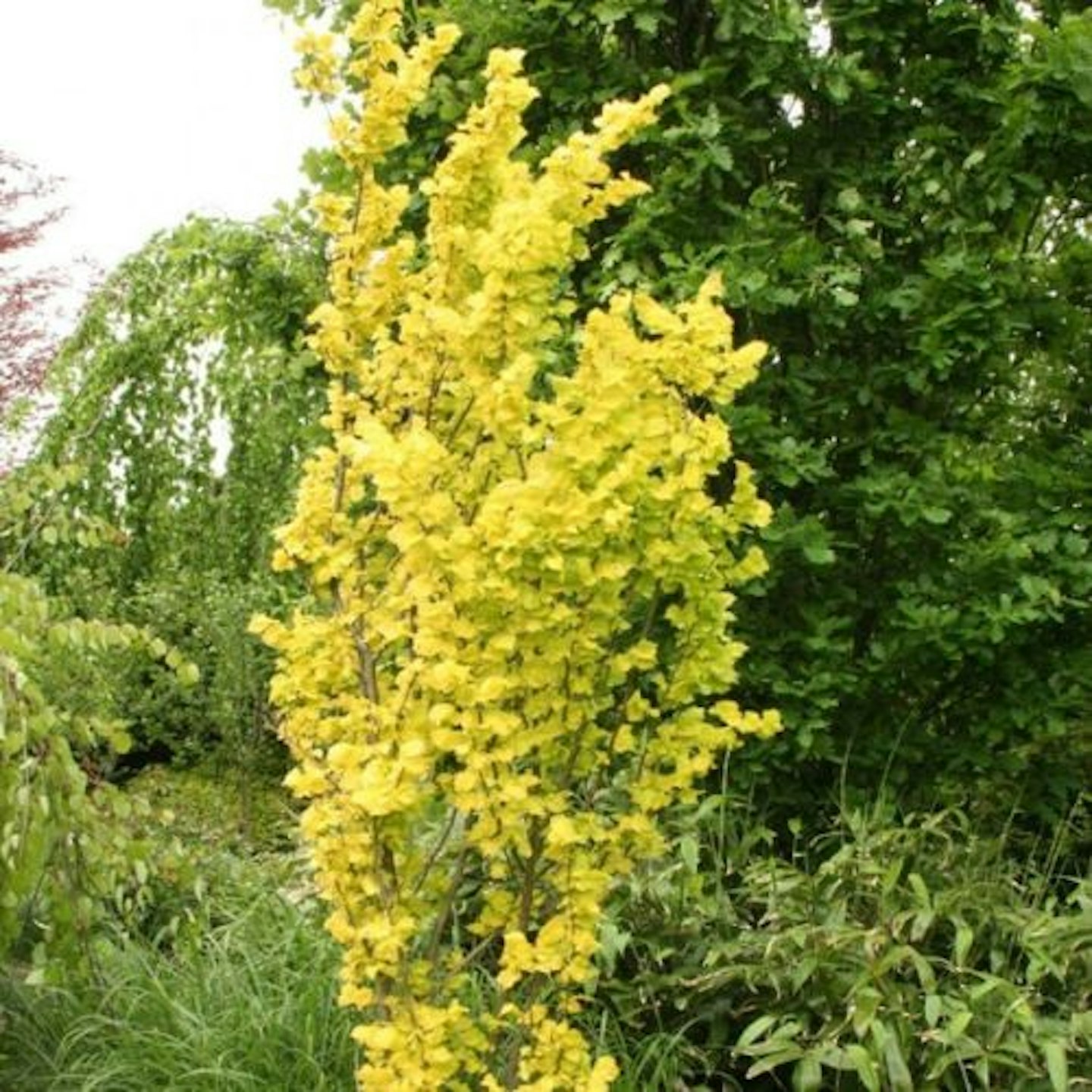
www.gardeningexpress.co.uk
Designers often use rows of tall pillar trees in town gardens to add a stylish punctuation point to a boundary, and it's a great option for privacy from the neighbours too. It also helps that this variety is a perfect way to brighten dark corners of your garden. As an added bonus for all nature lovers, this Golden Pillar Elm will attract several species of moths and butterflies.
Tree care: Plant in moist, well-drained soil in full sun.
Pros
- Bug-friendly
- Good for privacy
Cons
- Susceptible to disease
| Tree size: | Max height 4m, spread 2m |
Tree care and support
Writing for Garden News, Graham Rice, award-winning garden writer and photographer, shares his top tips for planting and supporting your new best tree for small gardens.
Planting for the future
• Your new tree will be with you for a long time, so prepare the soil thoroughly before planting. It really is worth it.
• Don’t just prepare the planting hole, improve the soil beyond the hole to encourage the roots to spread out.
• The best soil improver is well-rotted garden compost or, even better still, composted garden waste and homemade mulch from the green waste recycling; it’s almost always 100% weed-free.
• Spread out the roots of bare root trees and work soil in among them as you refill the hole.
We say, if you’re not sure where to plant your tree, growing it in a pot offers a temporary solution. Experiment with positioning it in different locations until you settle on the perfect spot before transplanting it into the garden.
Supporting your tree
• All trees need support when they’re young otherwise the roots will rock in the wind and will never take hold.
• The tall stakes, once so popular, have been proven to be less effective than much shorter stakes.
• Choose a stake, the top of which can be tied to your tree about 60cm (2ft) above the soil or, for larger trees, about one-third of the tree’s height.
• For bare-root trees, first, dig your planting hole, then knock in your stake vertically. Plant the tree, fitting the roots around the stake.
• For container-grown trees, knock the stake in at an angle to avoid the rootball.
• Finally, water in well.
FAQs
What is a bare root tree?
Bare root trees are small trees that are dug up when dormant, with all soil removed from the roots before they are packaged up and sent out to gardeners. They are usually less expensive but will quickly become established in your garden. There also tends to be a wider selection available than pot-grown trees, especially if you look online.
What to read next:
Discover everything you need to know to make your outside space look fantastic, quickly and easily, with hundreds of simple ideas, designer tricks, affordable products and expert advice with a Modern Gardens Membership. Find out more about the benefits of being a Member now.
Eleanor Weaver is the Deputy Homes & Garden Product Editor for A Modern Kitchen, specialising in kitchen accessories and appliances, including washing machines and microwaves. Having been a renter for a decade now, she loves looking for home inspiration in her spare time and is a master of DIY.
